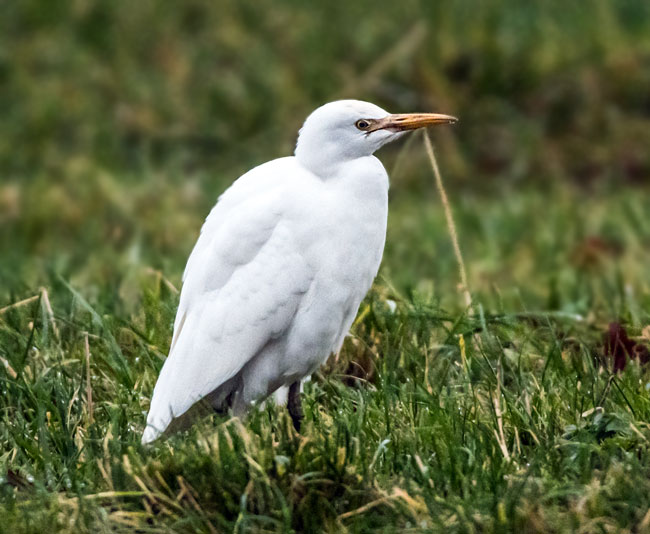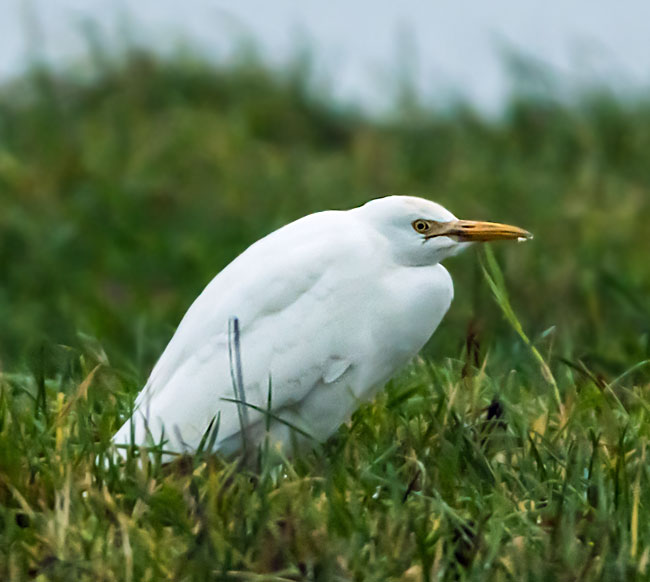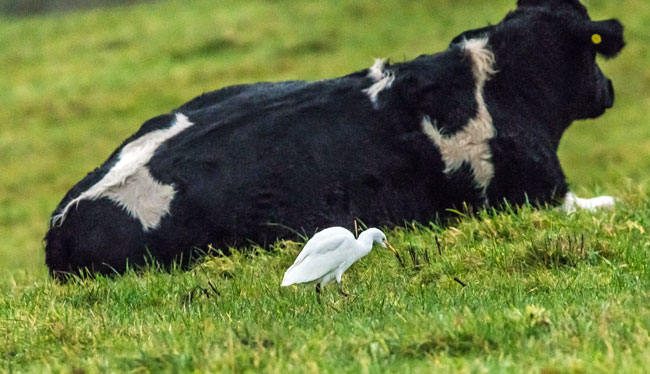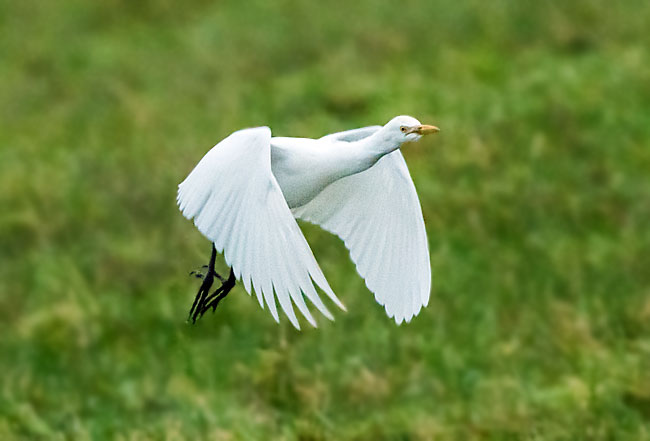
| Western
Cattle
Egret |
|
| Taken at Bishopton on 14th November 2018 using Nikon D500 with Sigma 600 mm zoom lens. |  |




| Western Cattle Egret. |
| Species
: Order: Family: Local names: |
Bubulcus
ibis. Pelecaniformes. Ardeidae. |
| Site Of Nest: Food: Plumage: Breeding Period: Eggs: |
Nests
in colonies, which are often, but
not always, found around bodies of water. Feeds on a wide range of prey, particularly insects , especially grasshoppers, crickets, flies, moths, as well as spiders, frogs and earthworms. In a rare instance they have been observed foraging along the branches of a banyan tree for ripe figs. This species is usually found with cattle and other large grazing and browsing animals, catching small creatures disturbed by the mammals. It has a relatively short thick neck, a sturdy bill, and a hunched posture. The non-breeding adult has mainly white plumage, a yellow bill and greyish-yellow legs. During the breeding season, adults develop orange-buff plumes on the back, breast and crown, and the bill, legs and irises become bright red for a brief period prior to pairing. The sexes are similar, but the male is marginally larger and has slightly longer breeding plumes than the female; juvenile birds lack coloured plumes and have a black bill. Depends on very large didtribution area. See Wikipedia 1 to 5 bluish - white eggs, although three or four is most common. |
| Voice |